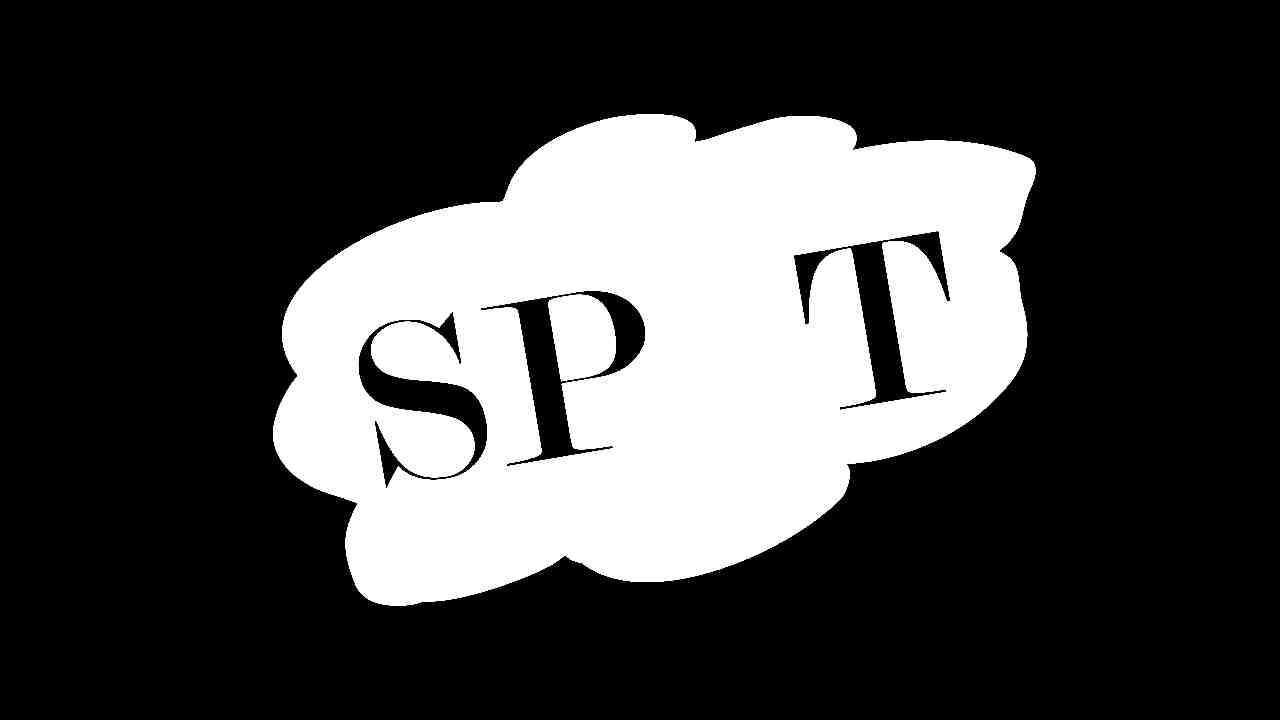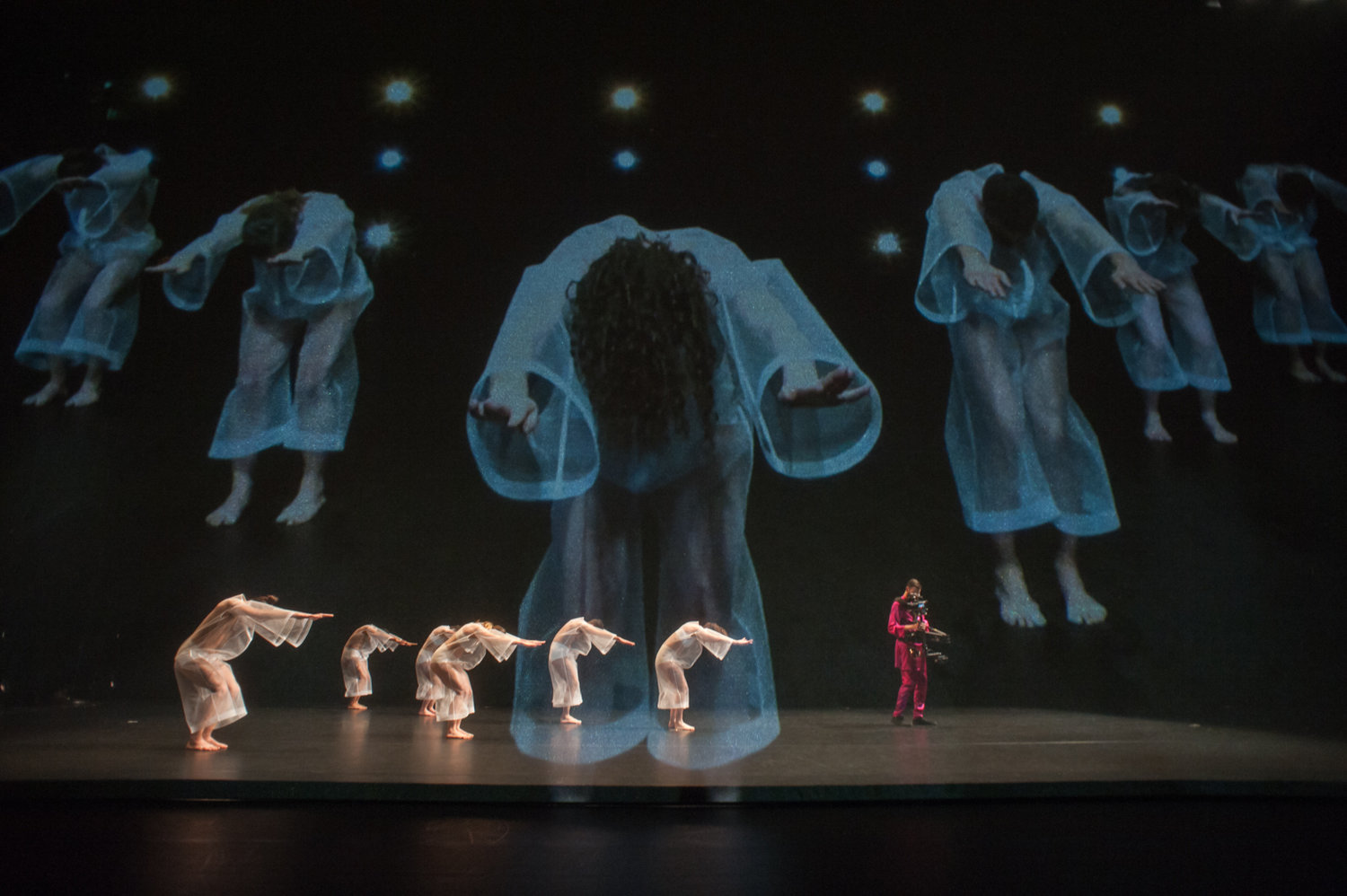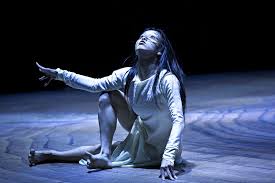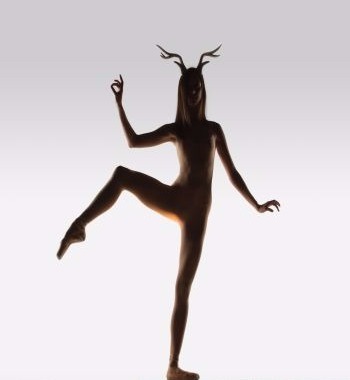Entering a theatre to witness just the heads of people popping out from behind a massive velvet
curtain is not what one would expect right away when attending a dance concert. After some
storytelling, jokes, and even a puppet show, it was clear that the mysterious, floating heads in
the curtains are the start of the concert. California State University, Long Beach’s annual BFA
concert, Variance, took a turn towards experimental, bold, and whimsical this year, filling myself
and the audience with curiosity and anticipation.
Variance was the third annual presentation of BFA and guest artist work featuring the 1936
classic Lynchtown, by Charles Weidman, and premiered by BFA candidates Alice Amano,
Tanner Miranda, Justin Morris, Haley Richartz, Katelyn Sanchez, and Maili Schlosser in
collaboration with BFA and MFA composers from the Bob Cole Conservatory of Music.
Justin Morris’ piece, Iamnot|utterances\habitus, opened the show with the floating heads that
challenged preconceptions of performance, authenticity, and identity by way of storytelling and
lip syncing. Throughout the storytelling, the performers switched up whose story they were
telling, and told them as if it was their own story. Through ingenious switch up of identity
throughout a diverse cast, constant disappearing and reappearing heads, interaction with the
audience, a sock puppet show, and a lip-sync over the pre-show courtesy message caused
uproars of laughter and immediate engagement. Iamnot|utterances\habitus provided a few
surprises throughout the afternoon, where Morris continued to warp our conception of
performance while also lifting up those we have lost to hate and violence.
In Finding Syzygy, Haley Richartz had taken the show into a different world by presenting an
abstract work that explored the choreographic device and cosmic phenomenon of retrograde.
Richartz’ created an optical illusion for me with her use of formations, space, and a projection
created by Gregory R.R. Crosby. “Syzygy” is the alignment of three celestial bodies, which was
translated well with the performer’s moving like an organism rolling, morphing, and retrograding
themselves in and out of the floor. With a sound score created by Richartz herself, in addition, to
the beautiful imagery her movement created, she evoked a world that transcended physical and
emotional reality.
With a beautiful first image of a performer being retained by red fabric that stretched from one
side of the stage to the other, Alice Amano’s Day 1 explored the multifaceted emotional
landscape of romantic love through dynamically charged movement. Amano’s choreography for
an all-male cast displayed a powerful physicality of resistance, vulnerability, passion, and
internal conflict. Utilizing an amazing use of weight and inertia, the dancer’s moved in and out of
manipulating and paralleling each other with literal and figurative restraint of the red fabric. With
a score by Daniel Kim, Amano’s choreography looked deeply into paradoxical aspects of
intimacy, emotional distance, and human longing for companionship countered with a need for
independence.
Scopophilia, created by Tanner Miranda and Maili Schlosser, pulled me in immediately as they
explored the idea of “the male gaze” and its physical and psychological effect on women in
society. Their all-female cast was dressed in nude leotards with mesh cutouts that highlighted areas men find attractive on women. With all the theatre’s soft goods having disappeared, the
women were on stage vulnerable and on display with nowhere to hide. On the theatre wall, a
projection, created by Gregory R.R. Crosby, played a layered reel of the performers dancing
with one woman staring at the audience throughout the whole piece. Scopophilia was
structurally based upon the four stages of sexual stimulus and response. Moving in and out of
being still and using gestures, the performer’s had clearly broken the fourth wall as they stared
at the audience with a look that read, “I know you’re looking at me.” Miranda and Schlosser’s
use of movement, stillness, and focus in their choreography successfully emphasized a
sexualized view that served to unnerve and even disgust those watching.
Variance’s intermission was not like any other intermission I have experienced before. Morris’
cast of floating heads reappeared welcoming the audience to do what they needed to do during
intermission, but also announcing that Iamnot|utterances\habitus will continue. Identity and race
were addressed in this section with the use of a soloist wearing a cutout mask of Morris’ face
while he told a story, a lip-syncing trio in the lobby dressed in whimsical clothes and drag, and
two faceless performers skillfully and fearlessly performing up high in one of the theatre’s
lighting wall pockets. This intermission confused me on where to be physically, but was highly
engaging to the point where I was rushing between the lobby and theatre to see what was
happening.
For this year’s, Variance, The Department of Dance was honored to have presented,
Lynchtown, by Charles Weidman. Created in 1936, and inspired by his own experience
witnessing the heinous killing of a young man, Weidman’s piece tackles racism and mob
mentality in a work that is all too timely nearly 100 years later. Lynchtown was staged by George
Willis, a Weidman dancer who performed the work in 1950s-70s Los Angeles and has staged
the classic throughout the country. In this expressive work, the performer’s danced fully together
in movement and character creating a wonderful re-staging of Weidman’s work. In this day and
age there are numerous modern dance techniques, and to witness a traditional piece where all
these techniques stemmed from was a truly a treat. With original costumes and lighting design,
this performance gave a glimpse back in time into a seminal work of one of the fathers of
American modern dance.
In the premiere of As She Speaks or So You Said, Katelyn Sanchez portrays the personal, yet
universal process of transformation through three female dancers. Choreographically, working in
trios is difficult; however, Sanchez was successful with her trio of women and keeping them all
connected yet separate every second. Either the performer’s pathways paralleled, interacted, or
crossed, clearly relating this trio represented one person. Heavily inspired by literature, As She
Speaks or So You Said transports you into a poem figuratively and literally. Performer Elenna
Derkach beautifully performed her solo while speaking a poem about self-acceptance. Sanchez’
work was a tasteful, sophisticated reveal of the different stages in a woman's transformation.
After a show when walking out into the lobby you expect there to be performer’s waiting for their
friends and family; however, Variance continued the show after the curtain went down. The final
section of Morris’ Iamnot|utterances\habitus traveled through, around, and out of the lobby with
Morris was dressed in a red skirt, black boot heels, and a green wig telling stories about
discrimination, sexuality, and objectification. Being a performer myself, I was absorbed by the
change of structure that Iamnot|utterances\habitus gave Variance. Morris and his cast were
successful in disrupting and shattering the perception of concert dance, as it takes a brave
group of people like them to put forth a bold, eccentric message about performance,
authenticity, and identity.
CSULB Department of Dance’s annual BFA concert, Variance, was experimental, provocative,
and all six different concepts in the concert tied together in a bow. All the choreographer’s had
unique voices that spoke volumes to the many topics that were addressed. Breaking
boundaries, ideas, and conceptions, Variance, truly entertained the afternoon with different
ways of looking at humanity, the cosmos, identity, race, and gender.






















































